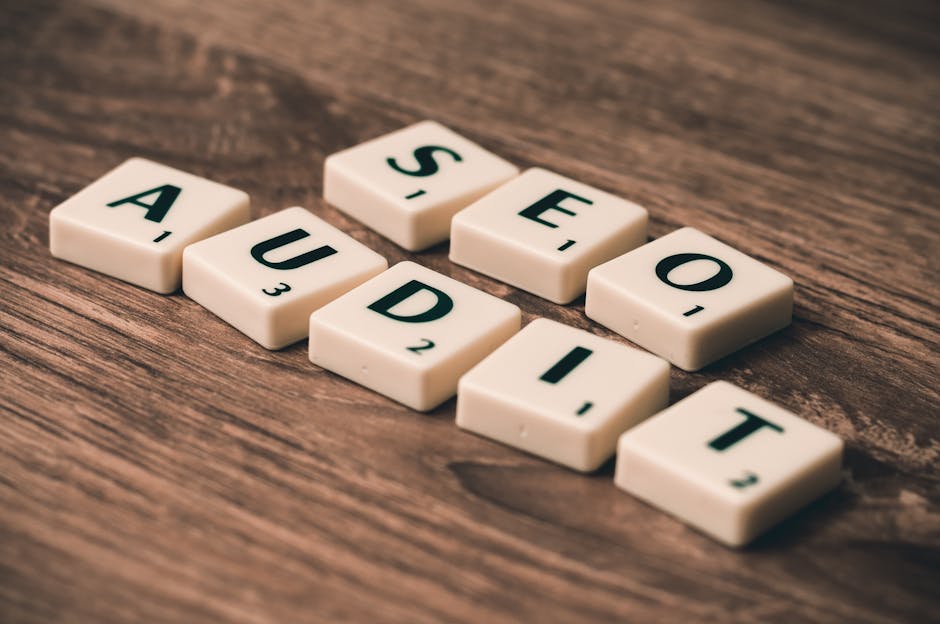SEO ensures your website stands out in search results and attracts organic visitors. There are three main types of SEO to know: on-page, off-page, and technical SEO. Here’s a quick breakdown to address your search intent:
- On-Page SEO: Improves individual page elements like content and keywords.
- Off-Page SEO: Boosts your site’s authority through backlinks and social media.
- Technical SEO: Focuses on backend improvements like site speed and crawlability.
All three work together to make your website visible, drive traffic, and engage users effectively.
My name is Danielle Birriel, and with over a decade of experience in all facets of on-page, off-page, and technical SEO, I’ve helped countless local businesses rise in search rankings and gain online prominence. I’ll guide you through these essential SEO strategies step by step.
What is SEO?
Search Engine Optimization (SEO) is the art and science of improving a website’s visibility on search engines like Google. When done right, SEO helps your site appear higher on search engine results pages (SERPs), driving more organic traffic and increasing brand awareness.
Imagine your website as a shop in a busy marketplace. SEO is like putting up a big, bright sign that attracts customers to your shop. Without it, your shop might be hidden in a dark alley where no one can find it.
Why Is SEO Important?
Visibility: Higher rankings on SERPs mean more people see your website. This increased visibility can lead to more traffic and potential customers.
Traffic: SEO drives organic traffic, which is the visitors who find your site through search engines. Unlike paid ads, organic traffic is free and sustainable.
User Engagement: Well-optimized sites are more user-friendly. They load faster, are easier to steer, and provide valuable content, keeping visitors engaged.
Brand Awareness: The more often people see your brand in search results, the more they recognize and trust it. This builds brand credibility and loyalty over time.
How Does SEO Work?
SEO involves several strategies and techniques that can be grouped into three main categories: technical SEO, on-page SEO, and off-page SEO.
- Technical SEO: Focuses on the backend aspects of your site, like site speed, mobile usability, and secure connections (HTTPS). It ensures search engines can crawl and index your site efficiently.
- On-Page SEO: Involves optimizing the content and elements within your web pages, such as meta tags, headers, and keywords. This makes your content more relevant to user queries.
- Off-Page SEO: Includes activities outside your website, like building high-quality backlinks and social media marketing. These strategies improve your site’s authority and reputation.
Key Components of SEO
1. Technical SEO: Ensures that your website meets the modern requirements of search engines. This includes improving site speed, mobile optimization, and secure connections. For example, Google considers page speed a ranking factor, so a fast-loading site can rank higher.
2. On-Page SEO: Focuses on the content of your website. This includes optimizing title tags, meta descriptions, headers, and images. High-quality content that addresses user intent can significantly improve your rankings.
3. Off-Page SEO: Involves creating backlinks from reputable sites, social media engagement, and online mentions. These activities build your site’s authority and trustworthiness.
By understanding and implementing these SEO strategies, you can improve your website’s visibility, drive more traffic, and improve user engagement. Next, we’ll dig deeper into the specifics of technical SEO and its key elements.
Technical SEO
Technical SEO is like the backbone of your website. It ensures that search engines can find, crawl, and index your site efficiently. Without a strong technical foundation, even the best content might remain invisible to search engines. Let’s dive into the key elements and best practices for technical SEO.
Key Elements of Technical SEO
- Site Speed
Fact: If a page takes longer than three seconds to load, most users will leave the site entirely.
Improve site speed by compressing images, minifying CSS and JavaScript, and using fast, reliable hosting. Use tools like Google’s PageSpeed Insights to identify and fix issues. - Mobile Usability
With over half of web traffic coming from mobile devices, mobile usability is essential. Google uses mobile-first indexing, meaning it primarily uses the mobile version of your site for ranking and indexing. - Ensure your site adapts to different screen sizes with responsive design.
- Use the viewport meta tag to scale your page to different devices.
- Check the Mobile Usability Report in Google Search Console for specific issues.
- HTTPS (Secure Websites)
Fact: Google gives preference to secure websites.
Ensure your site uses HTTPS by obtaining an SSL certificate. This not only secures data between the user and your site but also boosts your SEO. - Structured Data and Schema Markup
Structured data helps search engines understand your content better. - Benefits: Featured snippets, knowledge panels, and improved visibility in search results.
- Use schema markup to provide context to your content elements.
- Robots.txt
This file tells search engines which pages to crawl and which to ignore. Properly configuring robots.txt ensures that search engines focus on your most important pages. - XML Sitemaps
An XML sitemap lists all the pages on your site, helping search engines crawl and index them more efficiently. Submit your sitemap to Google Search Console for better indexing. - 301 Redirects
Use 301 redirects to permanently move old URLs to new ones. This helps maintain your site’s SEO value and ensures users and search engines find the correct pages. - Canonical Tags
Canonical tags prevent duplicate content issues by indicating the preferred version of a page. This is critical for maintaining a clean and efficient site structure.
Best Practices for Technical SEO
- Regular Audits
Conduct regular technical SEO audits to identify and fix issues. Tools like Google’s Search Console and various SEO software can help you keep track of your site’s health. - Stay Updated with SEO Trends
SEO is constantly evolving. Stay informed about the latest updates and trends to ensure your site remains optimized. Follow reputable SEO blogs and forums. - Focus on User Experience
A seamless user experience can significantly impact your SEO. Ensure your site is easy to steer, loads quickly, and provides valuable content.
By focusing on these technical SEO elements and best practices, you can ensure your site is not only optimized for search engines but also provides a great user experience. Next, we’ll explore the specifics of on-page SEO and how it complements technical SEO.
On-Page SEO
Key Elements of On-Page SEO
On-page SEO refers to optimizing individual web pages to rank higher and earn more relevant traffic. Let’s break down the key elements:
Content Quality and Relevance
Content is king. It’s essential to create high-quality, original content that answers your audience’s questions. Google prioritizes content that is informative, engaging, and relevant.
Title Tags and Meta Descriptions
Title tags and meta descriptions are crucial for click-through rates. A good title tag should be concise and include the primary keyword. Meta descriptions should summarize the page content and entice users to click.
Header Tags and Content Structure
Use header tags (H1, H2, H3, etc.) to organize your content. An H1 tag should contain the main title and primary keyword. Subheadings (H2, H3) break down the content into digestible sections, making it easier for users and search engines to steer.
Image Optimization
Images can improve user experience but must be optimized. Use descriptive file names, reduce file sizes for faster loading, and include ALT text to describe the image. This helps search engines understand your content better.
Best Practices for On-Page SEO
To maximize the effectiveness of your on-page SEO efforts, follow these best practices:
User Experience
A seamless user experience is critical. Ensure your site is easy to steer, loads quickly, and provides valuable content. A well-designed site can reduce bounce rates by up to 50%.
Mobile Optimization
With most searches now on mobile devices, having a mobile-friendly site is essential. Use responsive design to ensure your site works well on all devices. Test your site with Google’s Mobile-Friendly Test.
Keyword Strategy
Use tools like Google Keyword Planner to find relevant keywords. Incorporate these keywords naturally in your content, titles, meta descriptions, and headers. Avoid over-optimization, which can lead to penalties.
Content Freshness
Regularly update your content to keep it relevant and engaging. Fresh content can significantly influence rankings, as Google favors new and updated information.
Internal Linking
Linking to other pages within your site helps search engines understand your content structure. It also encourages users to explore more of your site, reducing bounce rates.
URL Structure
Simple, keyword-rich URLs are more likely to be clicked and properly indexed by search engines. Use URLs like example.com/buy-running-shoes instead of example.com/page123.
By focusing on these key elements and best practices, you can significantly improve your site’s visibility and user experience. Next, we’ll dig into off-page SEO to understand how external factors can influence your search rankings.
Off-Page SEO
While on-page SEO focuses on optimizing your website’s content and structure, off-page SEO involves actions taken outside your website to improve its ranking. Let’s explore the key elements and best practices of off-page SEO.
Key Elements of Off-Page SEO
Backlinks
Backlinks are links from other websites to yours. They are like votes of confidence, signaling to search engines that your content is valuable. The more high-quality backlinks you have, the higher your domain authority and search rankings.
Domain Authority
Domain authority is a measure of your website’s credibility and trustworthiness. It’s influenced by the quality and quantity of backlinks. Websites with higher domain authority are more likely to rank well in search engine results.
Content Marketing
Effective content marketing involves creating and sharing valuable content to attract and engage your target audience. This can include blog posts, infographics, videos, and more. High-quality content is more likely to be shared and linked to, boosting your off-page SEO.
Guest Blogging
Guest blogging involves writing articles for other reputable websites. This not only helps you reach new audiences but also earns you valuable backlinks. Ensure your guest posts are high-quality and relevant to the host site’s audience.
Social Media Marketing
While social media links don’t directly impact search rankings, they increase your content’s visibility and can lead to more backlinks. Engaging with your audience on social media also builds your brand and drives traffic to your site.
Brand Building
Building a strong brand online involves consistent messaging, high-quality content, and active engagement with your audience. A well-known and trusted brand is more likely to attract backlinks and social mentions, enhancing your off-page SEO.
Best Practices for Off-Page SEO
Quality Backlinks
Focus on acquiring backlinks from reputable, high-authority websites. Use strategies like guest blogging, broken link building, and outreach to earn these links. Quality matters more than quantity.
Social Media Engagement
Actively engage with your audience on social media platforms. Share your content, respond to comments, and participate in discussions. Increased engagement can lead to more shares and backlinks.
Brand Mentions
Monitor and capitalize on unlinked brand mentions. Reach out to websites that mention your brand without linking to it and request a backlink. Tools like Google Alerts can help you track these mentions.
Link Building
Use a mix of natural, built, and created links to diversify your backlink profile. Natural links are earned without effort, built links come from outreach, and created links are self-submitted in directories or forums.
Online Mentions
Mentions of your brand, even without a link, can positively impact your SEO. Aim for mentions in high-authority publications and industry websites to boost your credibility and visibility.
By focusing on these key elements and best practices, you can significantly improve your off-page SEO, building your site’s reputation and authority. This, in turn, will improve your search rankings and drive more organic traffic to your site.
Next, we’ll explore how technical, on-page, and off-page SEO work together to create a holistic and effective SEO strategy.
On Page Off Page and Technical SEO: How They Work Together
When it comes to SEO, it’s not about choosing between technical, on-page, and off-page strategies. Instead, it’s about understanding how they complement each other to improve your website’s visibility, user experience, and search rankings. Let’s break down how these pillars work together.
Technical SEO vs On-Page SEO
Technical SEO focuses on the backend infrastructure of your website. It’s all about performance—ensuring your site is fast, secure, and easy for search engines to crawl and index. Think of it as laying the foundation of a house. If the foundation is weak, everything built on top will suffer.
On-Page SEO, on the other hand, deals with the content on your website. It’s about making sure that your pages are relevant and valuable to users. This includes optimizing title tags, meta descriptions, headers, and images. In simpler terms, this is like decorating the house. You want it to be attractive and useful for visitors.
Both elements are crucial. A well-optimized page (on-page SEO) won’t perform well if your site is slow or full of errors (technical SEO). Conversely, a technically sound site won’t rank well if its content is irrelevant or poorly optimized.
On-Page SEO vs Off-Page SEO
On-Page SEO is entirely within your control. You can directly optimize your content, tags, and internal links to make your site more relevant to search queries. This helps search engines understand what your page is about and improves user experience.
Off-Page SEO is about building your site’s authority and credibility from the outside. This includes earning backlinks from other reputable sites, social signals, and online mentions. While you can influence these factors, you can’t control them directly.
A good analogy is a restaurant. On-page SEO is like the quality of food and service inside the restaurant. Off-page SEO is like the reviews and word-of-mouth recommendations from people who have dined there. Both are essential for attracting and retaining customers.
Complementary Roles and Holistic Strategy
To achieve optimal results, these three pillars of SEO must work in harmony.
- Technical SEO ensures your site is accessible and performs well.
- On-Page SEO makes your content relevant and engaging.
- Off-Page SEO builds your site’s authority and reputation.
A holistic SEO strategy considers all these aspects. For example, a fast-loading, mobile-friendly website (technical SEO) with high-quality, keyword-optimized content (on-page SEO) that earns backlinks from reputable sites (off-page SEO) is more likely to rank higher in search results.
This comprehensive approach not only boosts your search rankings but also improves user experience, leading to higher engagement and conversions.
Next, we’ll dive into frequently asked questions about on-page, off-page, and technical SEO to clarify any lingering doubts.
Frequently Asked Questions about On Page Off Page and Technical SEO
What is the difference between technical SEO and onsite SEO?
Technical SEO focuses on the backend infrastructure of your website. It ensures that search engines can crawl and index your site efficiently. Key elements include:
- Site Speed: How quickly your pages load.
- Mobile Usability: Ensuring your site works well on mobile devices.
- Security: Using HTTPS to protect user data.
- Structured Data: Adding schema markup to help search engines understand your content.
Onsite SEO (also known as on-page SEO) deals with the content and user elements of your website. It aims to make your pages relevant and engaging for users and search engines. Key elements include:
- Content Quality: Creating valuable and unique content.
- Meta Tags: Optimizing title tags and meta descriptions.
- Headers: Using header tags (H1, H2, etc.) to structure your content.
- Internal Linking: Linking to other pages on your site to improve navigation.
In short, technical SEO is about making sure your site is easy for search engines to crawl and index, while onsite SEO is about optimizing the actual content and user experience on your pages.
What is the difference between on-page SEO and off-page SEO?
On-Page SEO is entirely within your control. It involves optimizing the elements on your website to improve its relevance and user experience. This includes:
- Keyword Optimization: Using relevant keywords in your content.
- Content Creation: Writing high-quality, informative articles and blog posts.
- Image Optimization: Adding alt text to images and compressing them for faster load times.
- URL Structure: Creating clean and descriptive URLs.
Off-Page SEO involves activities outside your website to build its authority and reputation. This includes:
- Backlinks: Earning links from other reputable websites.
- Social Signals: Engaging with users on social media platforms.
- Online Mentions: Getting mentioned in articles, reviews, and forums.
On-page SEO improves your site’s relevance and user experience, while off-page SEO boosts your site’s authority and credibility.
What is the difference between technical SEO and local SEO?
Technical SEO focuses on the technical aspects of your website to ensure it performs well in search engines. This includes:
- Crawling and Indexing: Making sure search engines can easily find and index your pages.
- Site Speed: Ensuring your site loads quickly.
- Mobile Friendliness: Making your site responsive on all devices.
Local SEO aims to improve your website’s visibility in local search results. This is crucial for businesses that want to attract customers in specific geographic areas. Key elements include:
- Google My Business: Creating and optimizing your Google My Business profile.
- Local Keywords: Using keywords that include your location (e.g., “pizza shop in New York”).
- Local Citations: Getting your business listed in online directories like Yelp and Yellow Pages.
- Reviews: Encouraging customers to leave positive reviews on Google and other review sites.
In summary, technical SEO ensures your site is optimized for search engines in general, while local SEO focuses on improving your visibility in local search results.
By understanding these differences, you can better tailor your SEO strategy to meet your specific goals. Next, let’s explore some common questions about implementing these strategies effectively.
Conclusion
At D&D SEO Services, we understand that a comprehensive SEO strategy is essential for improving your website’s visibility, search rankings, and user experience. By focusing on on-page SEO, off-page SEO, and technical SEO, we ensure that every aspect of your website is optimized for both search engines and users.
Comprehensive Strategy
Our approach to SEO is holistic. We start with technical SEO to ensure your website is easily crawlable and indexable by search engines. This includes optimizing site speed, mobile usability, and secure connections (HTTPS). By laying a strong foundation, we make sure your site is ready to compete in the digital landscape.
Next, we focus on on-page SEO. This involves creating high-quality content, optimizing meta tags, and ensuring proper keyword integration. We also pay close attention to internal linking, image optimization, and URL structure. Our goal is to make your content as relevant and engaging as possible, both for users and search engines.
Finally, we tackle off-page SEO. This is about building your site’s authority and reputation through quality backlinks, social media engagement, and online mentions. By creating a robust off-page strategy, we help your site gain the credibility it needs to rank higher in search results.
Visibility and Search Rankings
By combining these three facets of SEO, we improve your website’s visibility. A well-optimized site not only ranks higher but also attracts more organic traffic. This means more potential customers finding your business through search engines.
User Experience
A crucial part of our strategy is improving the user experience. Fast-loading pages, mobile-friendly designs, and well-structured content keep visitors engaged and reduce bounce rates. This not only pleases your audience but also signals to search engines that your site is valuable, further boosting your rankings.
Partner with Us
Ready to lift your website rankings and improve your online presence? At D&D SEO Services, we offer personalized, comprehensive SEO solutions custom to your unique business needs. Our expertise in on-page, off-page, and technical SEO ensures that your site not only ranks well but also provides an exceptional user experience.
Contact us today to get started on your journey to online success!








